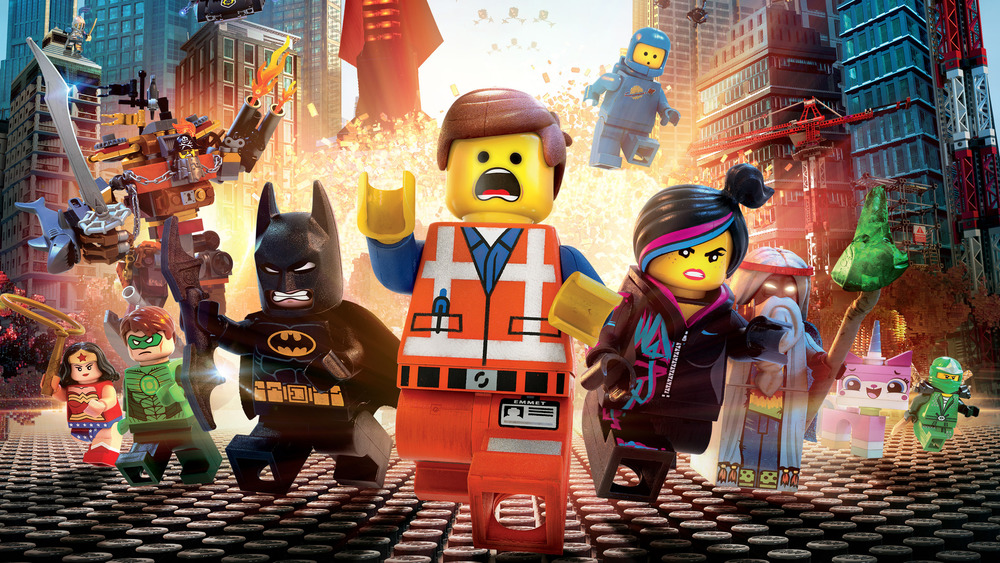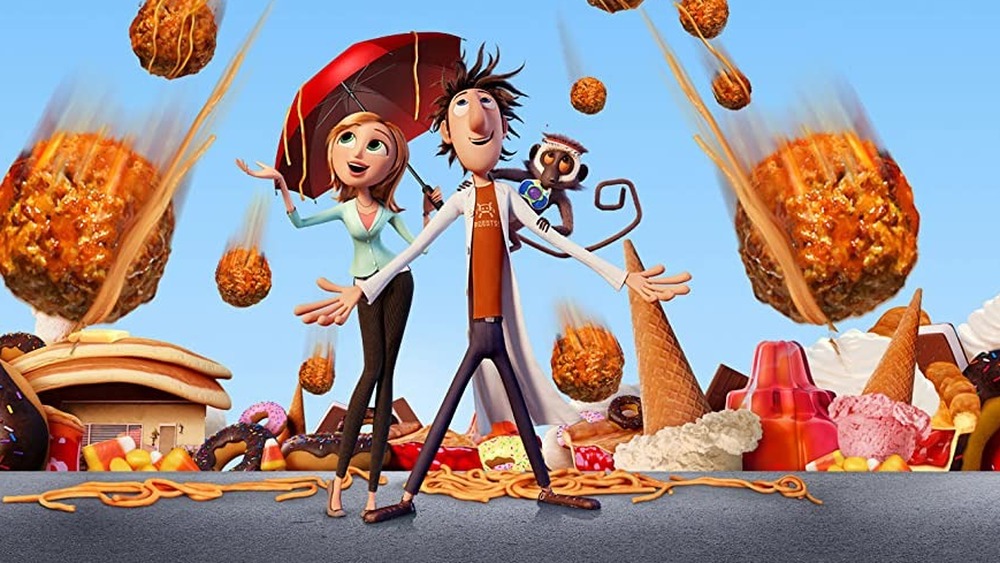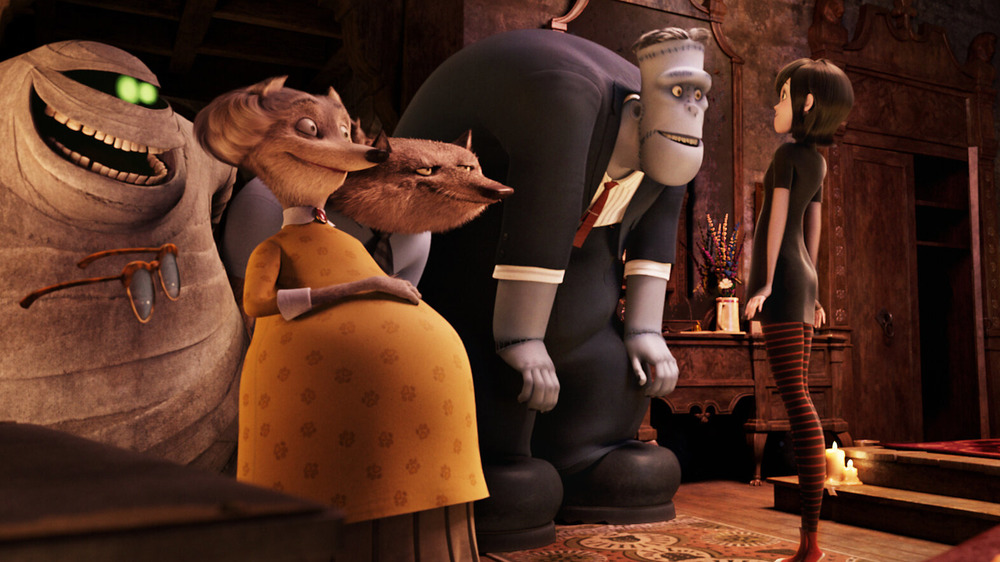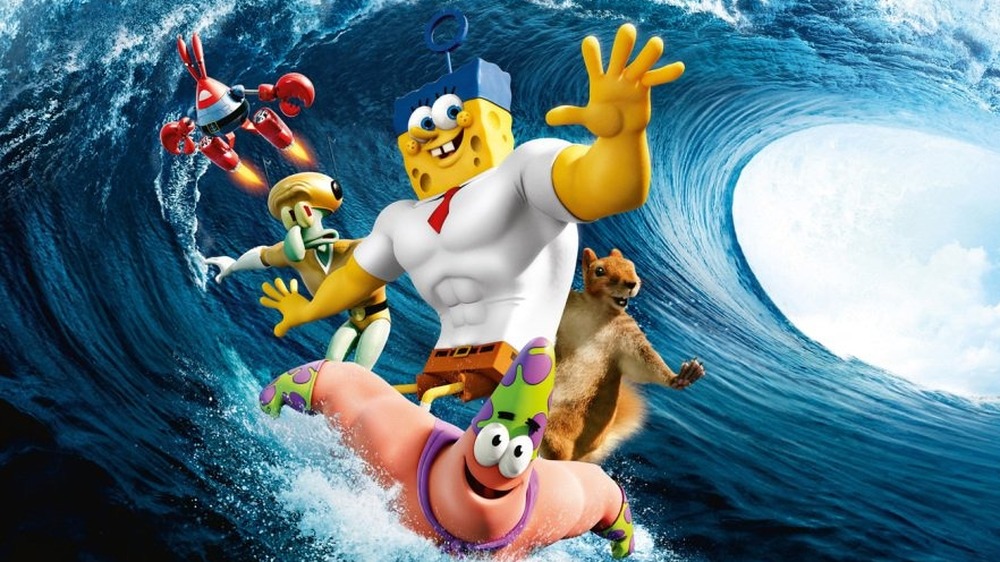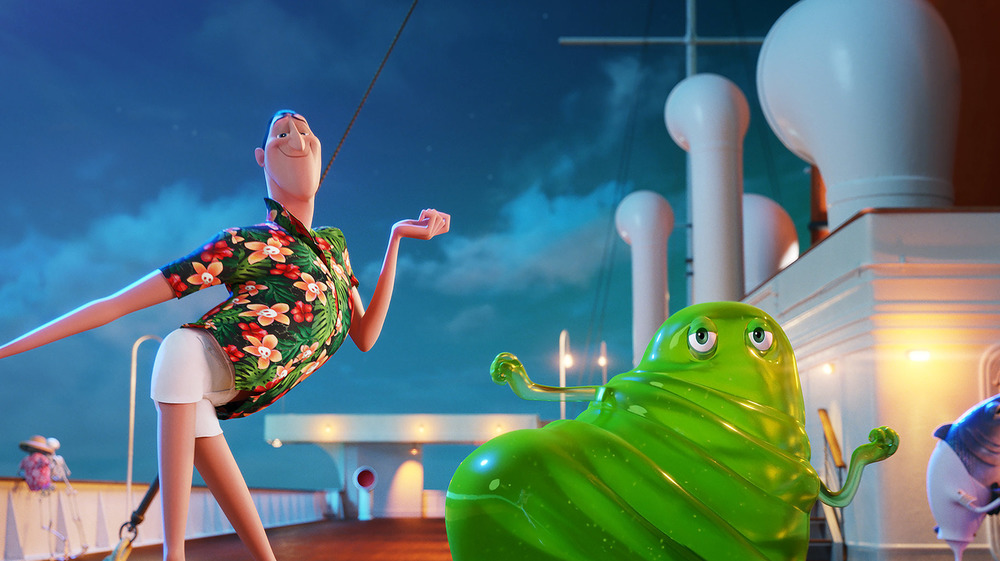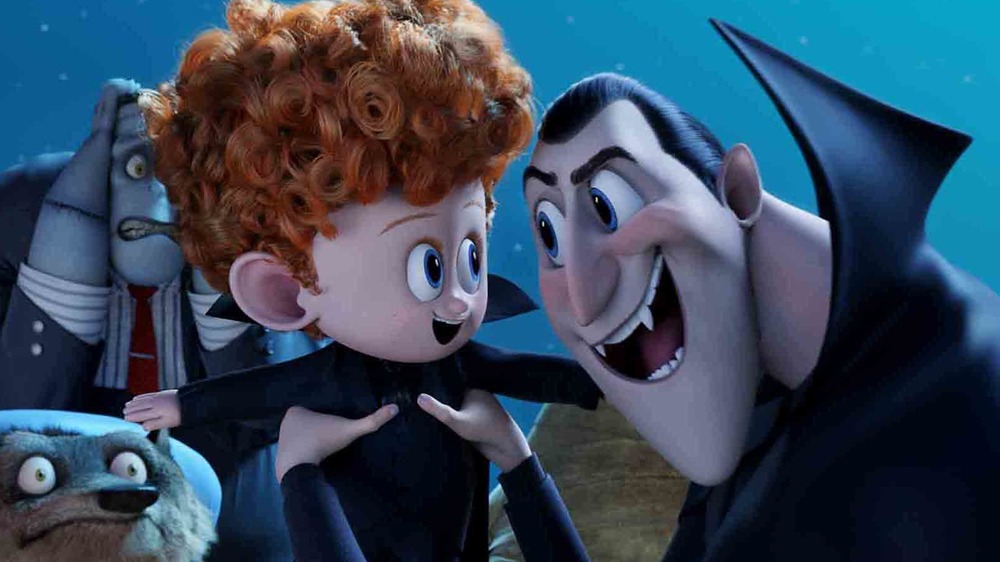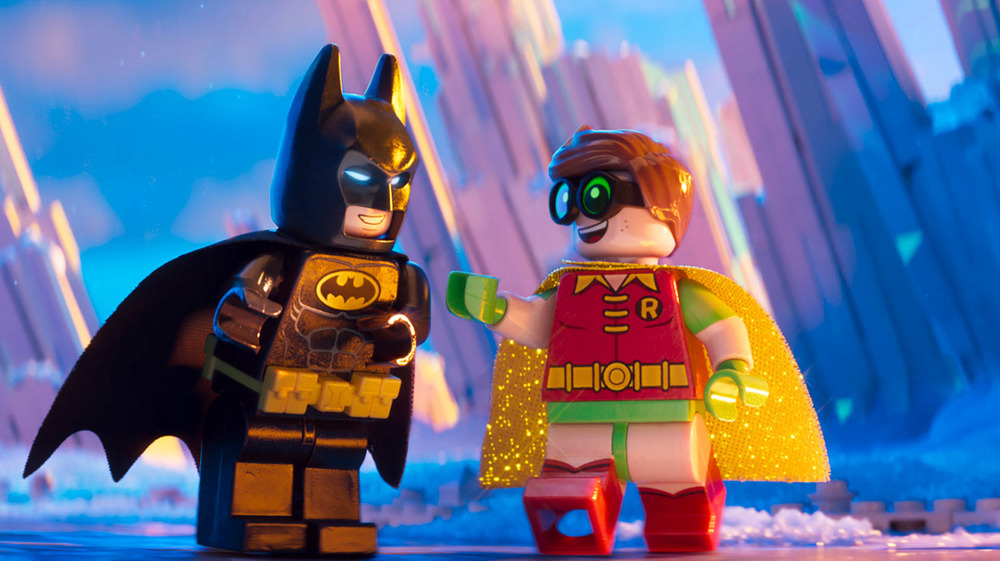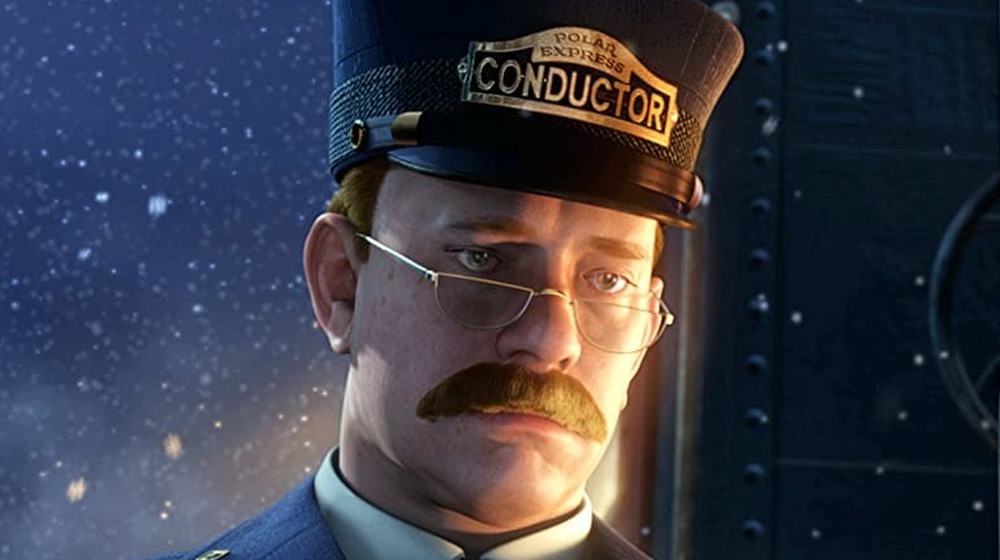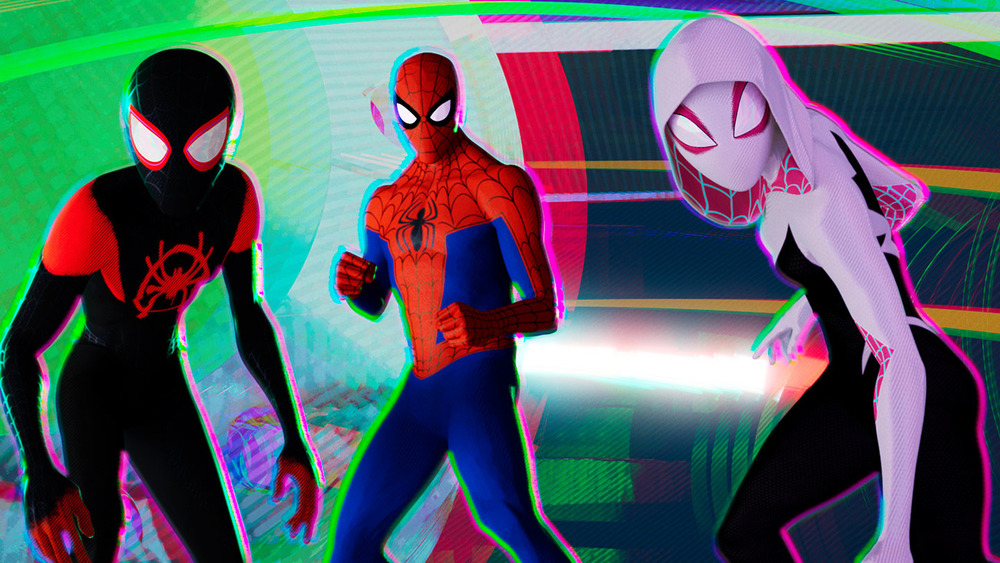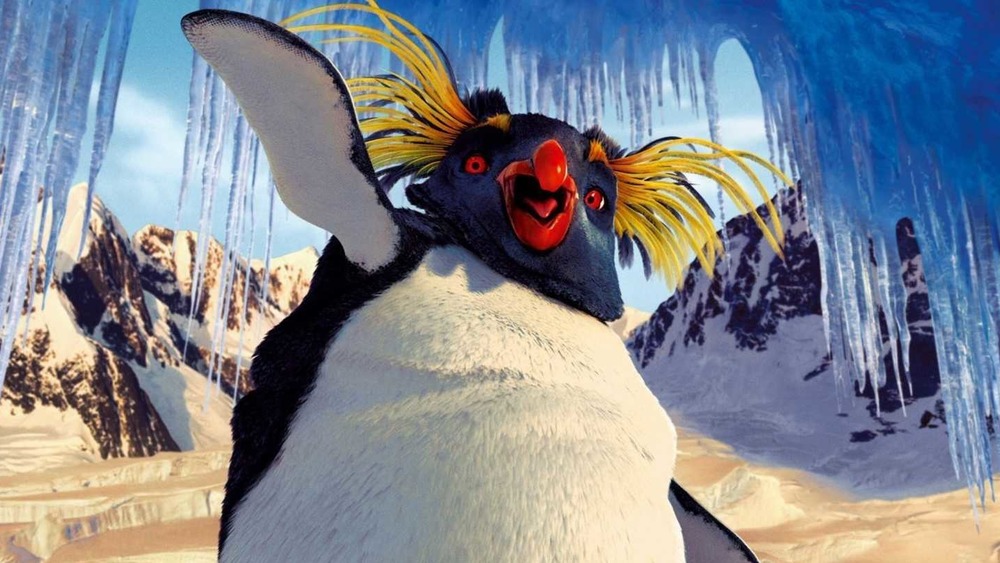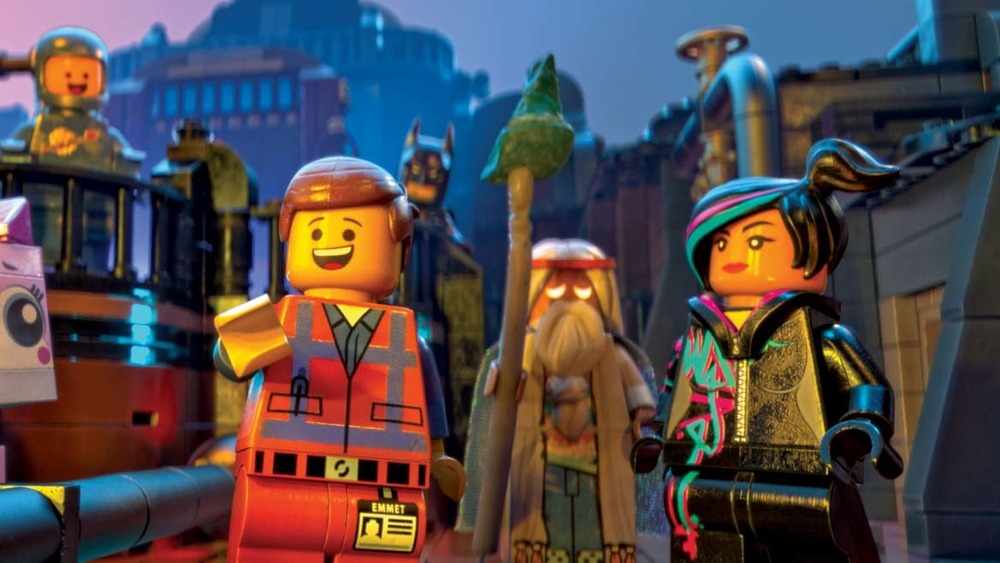The Biggest Animated Movies That Didn't Come From Disney Or Universal
In recent years, the world of North American animation has gotten even smaller. Thanks to Disney's acquisition of the 20th Century Fox animation outfit Blue Sky Studios and Universal purchasing DreamWorks Animation, four of the biggest producers of animated fare in North America now reside under two roofs. The dominance of Disney and Universal in this field is best reflected by the fact that the top 20 highest-grossing animated movies domestically now all belong to just two different movie studios. To be an animated movie that grosses $260+ million domestically is to also inherently be a product of one of two corporations. This is a daunting fact on a number of levels, particularly if you're at one of the many animation studios that doesn't belong to either Disney or Universal.
But that doesn't mean non-Disney/Universal animated titles have totally failed to leave a financial impact on the domestic box office. In fact, in recent years, titles from studios like Sony Pictures Animation and Warner Bros. have begun to diversify who can and cannot become successful in this domain. None of them may have toppled the Mouse House yet, but these animated titles prove that Disney and Universal don't have a stranglehold on financially successful animated cinema.
Cloudy with a Chance of Meatballs snacked on box office glory
Sony Pictures Animation got off to a rocky start with its first film, 2006's Open Season, which grossed an okay but not exceptional $85.1 million domestically. The company's follow-up feature, Surf's Up, didn't reverse the company's financial fortunes thanks to it being an outright box office disappointment. But with its third movie, Cloudy With a Chance of Meatballs, Sony Pictures Animation finally took off at the box office.
Dropping on the plates of moviegoers in September 2009, Meatballs managed to score $124.8 million at the domestic box office, more than 30% higher than Open Season just three years prior. Box Office Mojo attributed this box office success to the unique visuals of food falling from the sky, which helped keep Cloudy from blending in with other computer-animated kids' movies. It didn't hurt that the movie scored positive reviews from critics and audiences alike, which gave it word-of-mouth strong enough to ensure it could hold on well at the box office through the fall of 2009. Though Sony Pictures Animation wasn't as immediately lucrative as Pixar or Dreamworks Animation, they finally savored the sweet taste of success with Cloudy With a Chance of Meatballs.
Audiences chose a trip to Hotel Transylvania
The Hotel Transylvania movies are widely loved by kids and adults alike, managing to gross over $1.3 billion worldwide. The wacky stories of Dracula (Adam Sandler) running a hotel exclusively for monsters, though, did not get off the ground so smoothly. First announced in 2006, Hotel Transylvania went through several directors and numerous release date delays as artists struggled to attach a cohesive story to the concept of a monster hotel. Eventually, a version of the film helmed by Genndy Tartakovsky made its way to movie theaters in September 2012. Combining that troubled production history with the erratic box office track record of Sony Pictures Animation, it was anyone's guess if the original Hotel Transylvania would actually take off at the box office.
Despite all those obstacles, audiences turned out in droves for Hotel Transylvania. Scoring the then-biggest opening weekend ever for a September release, Hotel Transylvania got off to a strong start and eventually made its way to $148.4 million domestically. There's a reason Sony Pictures Animation stuck with this project for all those years; the concept of Dracula, Frankenstein and other famous monsters inhabiting comically everyday personas is quite clever. The presence of Adam Sandler also didn't hurt considering what a draw he is for moviegoers. With all these factors in place, Hotel Transylvania went from a troubled project to a box office hit that birthed a new franchise.
SpongeBob proved enduringly popular with Sponge Out of Water
"I'm ready! I'm ready!" So goes one of the most memorable catchphrases from the absorbent cartoon star SpongeBob Squarepants. Prior to the release of his second movie, The SpongeBob Movie: Sponge Out of Water, there were concerns over whether or not audiences were really ready for a new theatrical SpongeBob film. It had been over a decade since the last time the yellow underwater critter had graced movie theaters. Could SpongeBob fever be a thing of the past?
But those concerns were annihilated by the time Sponge Out of Water finished its opening weekend. The film "crushed expectations," according to Box Office Mojo, and managed to open to $56 million on its way to grossing $162.9 million. Sponge Out of Water ended up having much more cross-generational appeal than initially expected in its gigantic domestic run. The heavy presence of CGI superhero versions of famous characters like SpongeBob and Patrick in the marketing also gave Sponge Out of Water something audiences couldn't get just by turning on SpongeBob reruns on the TV. Plus, it had a great release date: Much like The LEGO Movie, Sponge Out of Water opened a week before the lucrative three-day President's Day weekend. This gave SpongeBob's second movie sea legs most family films would kill for. In the end, audiences were more than "ready" for more SpongeBob on the big screen.
A summer release proved a boon for Hotel Transylvania 3
In 2009, the Ice Age franchise shifted from its usual March home to July for its third installment, Ice Age: Dawn of the Dinosaurs. It was a risky move that paid off, with Dawn of the Dinosaurs reaching a domestic box office high even in the competitive summer season. It was also a release strategy later mirrored by the Hotel Transylvania franchise with its own third installment, Hotel Transylvania 3: Summer Vacation.
Like the initial Ice Age entries, the first two Hotel Transylvania movies launched outside of summer, though Dracula and his pals had always called September home. But Summer Vacation debuted in theaters in mid-July. The new release approach resulted in a great $167.5 million domestic gross, only slightly below its predecessor. Hotel Transylvania 3 benefited from kids being able to see the movie during the week and further got its pop culture awareness goosed by the strong social media presence of its various cast members. It didn't hurt, too, that the first two Hotel Transylvania movies were well-liked by audiences. Much like the third Ice Age movie, Hotel Transylvania 3: Summer Vacation took its franchise to summertime territory with strong results.
Hotel Transylvania 2 proved Dracula and friends had long-term appeal
Over his decades of being a leading man, Adam Sandler has explored numerous genres, from Westerns to romantic comedies to sports stories. But one thing he's largely avoided, save for 2013's Grown Ups 2, is sequels. Despite his films being broadly appealing, Sandler has largely avoided making The Waterboy 2 or something similar. But once it became apparent that his 2012 animated film Hotel Transylvania was a hit, it was only a matter of time before a follow-up would emerge.
Sandler's rare foray into sequels turned out to be much more of a Despicable Me 2 than a LEGO Movie 2 among animated sequels in terms of box office performance. Hotel Transylvania 2 grossed $169.7 million, a sum that wasn't just higher than the domestic gross of its predecessor. It also made it the first Sony Pictures Animation title to clear $150 million domestically, a landmark achievement for the studio. Its box office run only got more impressive as 2015 went on. Hotel Transylvania 2, released in the autumn of 2015, would end up outgrossing animated holiday season titles like The Peanuts Movie and The Good Dinosaur. On top of all that, Hotel Transylvania 2 also ended up as Adam Sandler's highest-grossing movie ever domestically. With that, it was official; Adam Sandler had his first non-Grown Ups franchise.
The LEGO Batman Movie performed like a superhero
Despite getting off to a such a strong start with The LEGO Movie in 2014, the LEGO movie franchise would eventually peter out with the 2019 box office dud The LEGO Movie 2: The Second Part. Even prior to that, warning signs over the longevity over this series appeared through the significantly disappointing box office of The LEGO Ninjago Movie. But before those two, there was a moment where it did appear that this franchise could sustain a string of spin-offs and follow-ups thanks to the robust box office success of The LEGO Batman Movie.
Though not as big as The LEGO Movie, The LEGO Batman Movie still fared successfully in its domestic box office run, grossing $175.7 million, more than double its $80 million budget. It also came in ahead of all but two other animated movies in 2017. The LEGO Batman Movie's superpower at the box office was combining residual goodwill from The LEGO Movie with the general public's love for all things Batman. All but one of Batman's theatrical movies since 1989 have grossed over $160 million domestically. That kind of box office track record meant The LEGO Batman Movie could tap into the popularity of not one but two lucrative brand names. Even if subsequent LEGO movies showed that this wasn't a franchise built to last, The LEGO Batman Movie gave the series one last burst of box office glory.
The Polar Express iced the competition
Though it ended up being one of the highest-grossing non-Disney/Universal animated movies in history, the news did not initially look good for The Polar Express at the box office. The yuletide movie's lackluster opening weekend led to pun-filled headlines about how The Polar Express was "losing steam" at the box office. To be sure, the feature's initial $23.1 million debut wasn't ideal both for a movie that cost $170 million to make and a directorial effort from Robert Zemeckis. But the story of The Polar Express's box office was not told in one weekend.
Over the month-and-a-half between its release date and Christmas 2004, The Polar Express managed to hold on extremely well from weekend to weekend, including an impressive 23% increase in its third weekend of release. Positive word-of-mouth and the approaching arrival of Christmas worked enough magic on The Polar Express to overcome its lackluster launch and clear $162.7 million in its original domestic release. The financial stamina of The Polar Express didn't stop there, though. In the years since its premiere, The Polar Express has received annual theatrical re-releases that have taken it to $187.2 million domestically. Though that gargantuan $170 million budget means The Polar Express, even after all these years, still isn't as profitable as the most lucrative Pixar movies, it's still managed to overcome a slow start and become a box office success. Now there's an ending worthy of any uplifting Christmastime story.
Spider-Man: Into the Spider-Verse swung to an impressive haul
The 21st century has had no shortage of Spider-Man movies. This webcrawler has headlined enough feature films that it inspired a memorable gag on The Unbreakable Kimmy Schmidt. But the franchise had never truly delivered something like Spider-Man: Into the Spider-Verse before. For one thing, Miles Morales, rather than Peter Parker, was the kid behind the Spider-Man mask this go-around. For another, this would be the first fully-animated theatrically-released Spider-Man movie in history.
These qualities helped to ensure that Spider-Man: Into the Spider-Verse would find box office success in the holiday season of 2018. Despite facing an onslaught of competition from other higher-budgeted family movies like Bumblebee and Mary Poppins Returns, Into the Spider-Verse scored a massive $190.2 million domestic haul. This was due to the film's box office legs, which weren't just impressive by the standards of kids' movies. Scott Mendelson of Forbes observed that Into The Spider-Verse "is the leggiest comic book superhero movie of any kind in 29 years." Into the Spider-Verse more than doubled its $90 million budget and became by far the highest-grossing movie in history for Sony Pictures Animation. There had been plenty of Spider-Man before Into the Spider-Verse, but these box office achievements were just one way that this version of Spidey was able to stand on his own two feet.
Happy Feet danced its way into the heart of moviegoers
In the mid-2000s, penguins had taken over the pop culture landscape. The double-whammy of March of the Penguins and those cuddly but deadly penguins in Madagascar during the summer of 2005 had turned these arctic critters into America's new favorite animal. Arriving just in the middle of this phenomenon in November 2006 was Happy Feet, an animated film from Warner Bros. and Mad Max director George Miller. Coming on the tail end of not just other penguin films but a year packed to the gills with animated movies, there may have been reasonable concern that Happy Feet would be ignored at the box office.
Those concerns evaporated after Happy Feet's opening weekend, which kicked off its box office run in an impressive fashion by beating out Casino Royale for the top spot at the domestic box office. As pointed out by Box Office Prophets, the debut was also extra impressive due to Warner Bros. not having a ton of experience launching hugely successful animated titles. Rather than flopping like earlier Warner Bros. cartoons The Ant Bully and Quest For Camelot, Happy Feet took off like a rocket. After enduring throughout the holiday season of 2006, Happy Feet eventually amassed $198 million domestically, more than double its $85 million budget. Happy Feet became the seventh-biggest movie of 2006 and remains George Miller's highest-grossing film ever. These penguins didn't just dance, they also broke the bank.
The LEGO Movie was a toy that everyone wanted to play with
"A movie based on LEGOs? Who would see that?" was often the default pre-release response to the prospect of a movie based on those little Danish-made bricks. Given the dismal track record of movies based on toys, a sense of dubiousness about The LEGO Movie was understandable. Clearly, directors Phil Lord and Chris Miller had their work cut out for them when it came to transforming The LEGO Movie from an unappealing prospect into a box office sensation. But just as they did on Cloudy With a Chance of Meatballs and 21 Jump Street, Lord & Miller wrung a box office hit out of unexpected source material with The LEGO Movie.
The LEGO Movie wasn't just a box office hit, it was historic. By grossing over $200 million (topping off at $257 million domestically), it was the first time in history that a cartoon not currently owned by Disney or Universal cracked that box office threshold, giving the biggest Pixar and Illumination titles a run for their money. The film's success was, like all of the biggest animated films, due to its appeal stretching far beyond just children and their parents. Adults nostalgic for LEGOs or even just moviegoers looking for sharp comedy also turned out for The LEGO Movie. What was once thought to be a pointless marketing exercise turned into one of the biggest animated films in history.
